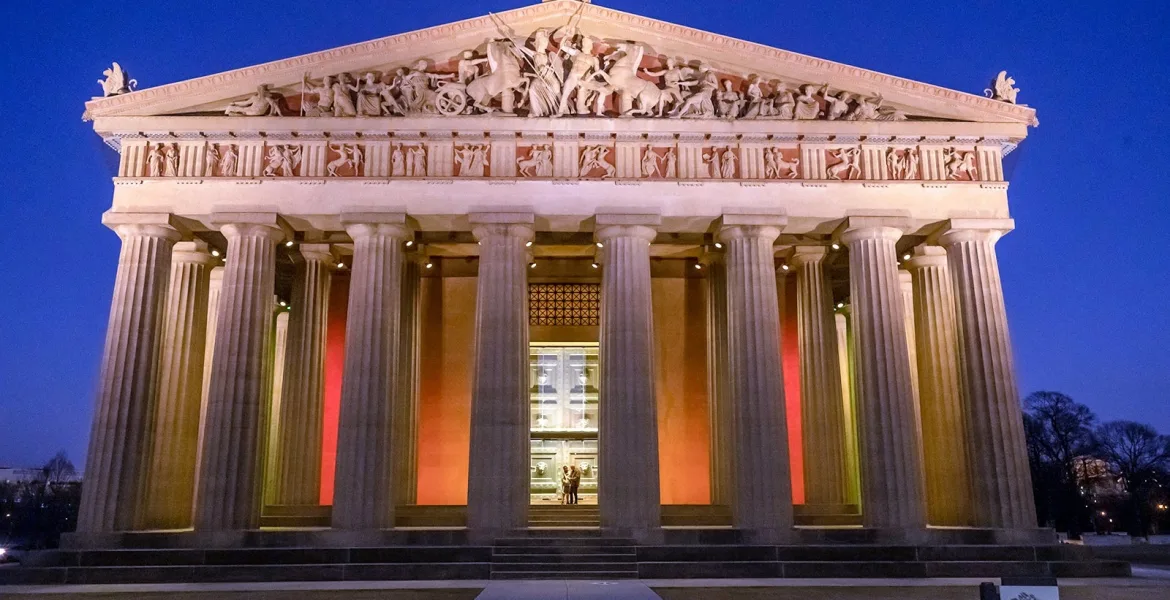Hold on, why is there a full-size replica of the Parthenon in Nashville, Tennessee?
In 1897 Nashville hosted the Tennessee Centennial Exposition to mark one hundred years since it entered the union. Tennessee actually joined in 1796, and so the exhibition was a year late... but it lived up to expectations.
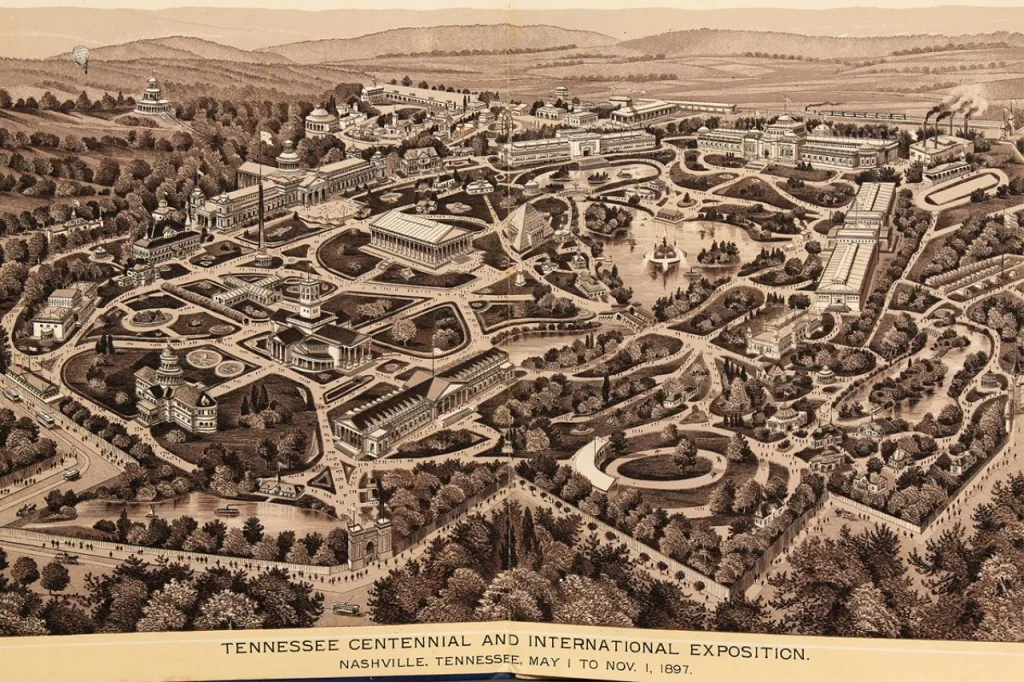
Nashville is known as the "Athens of the South" because of its many educational institutions, and so the centrepiece of the exposition was an exact replica of the famous Parthenon in Athens, originally built between 447-438 BC, as it would have looked when first completed.
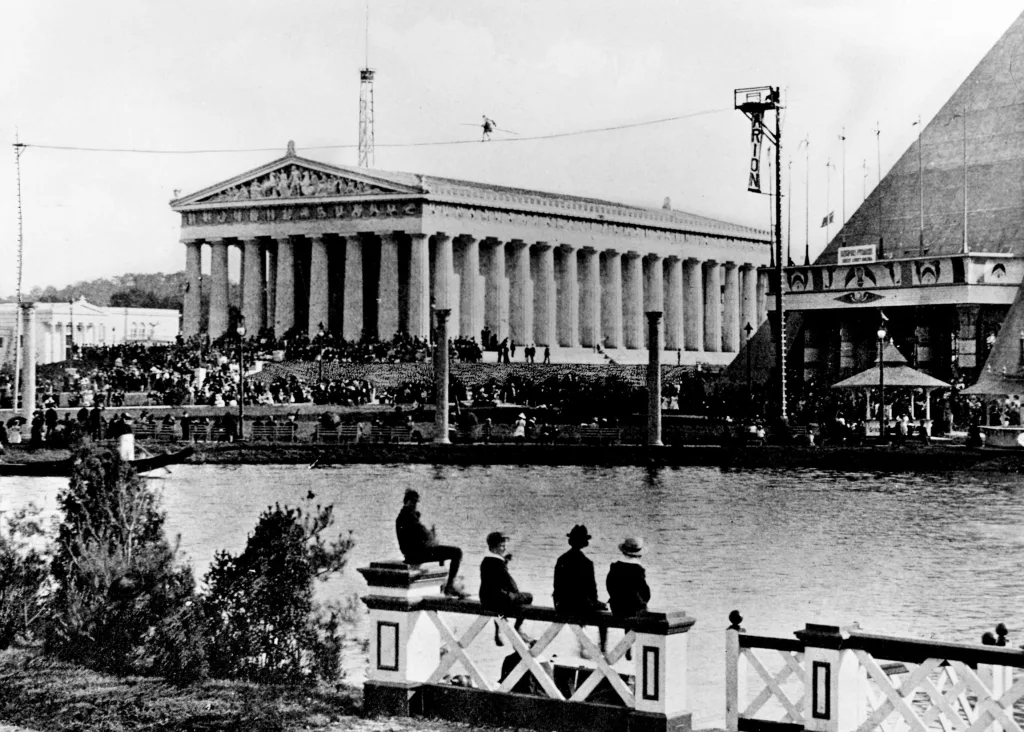
This Parthenon, originally intended to be temporary, was so popular that the authorities decided against demolishing it when the Centennial Exposition closed. It was used for all sorts of things, but because of its materials (plaster, wood, and brick) it started to deteriorate.
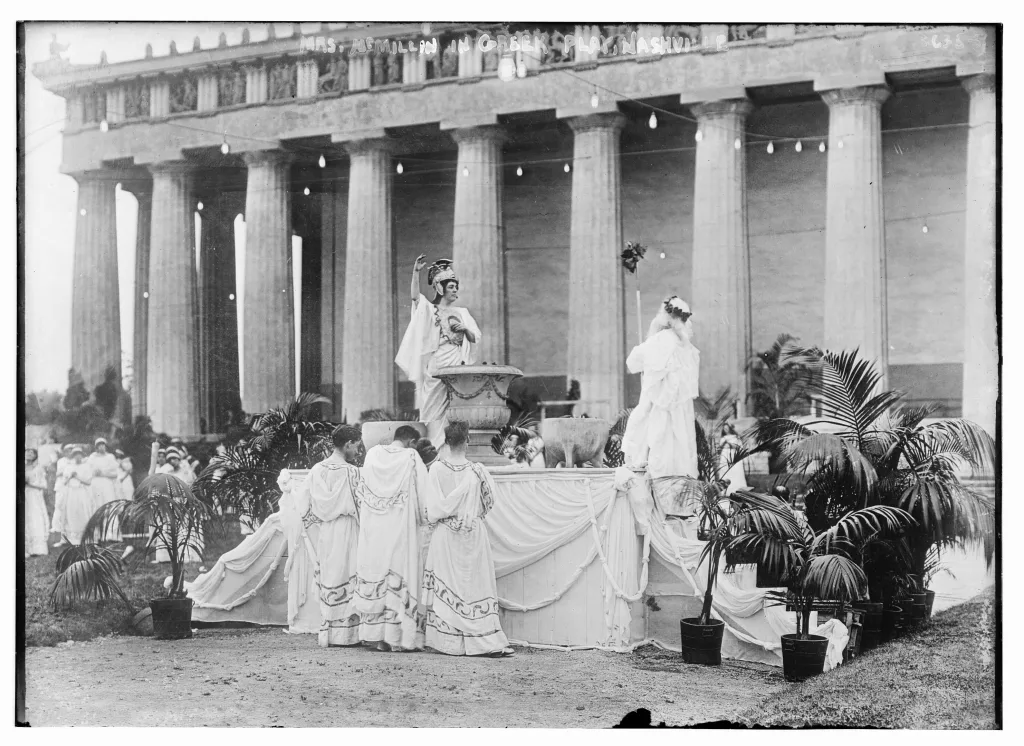
And so in 1920 they decided to rebuild it properly. Construction lasted for over a decade, carefully guided by local architect Russell Hart and historian of Classical architecture William Bell Dinsmoor. It reopened to much fanfare in 1931 as a public museum and gallery.
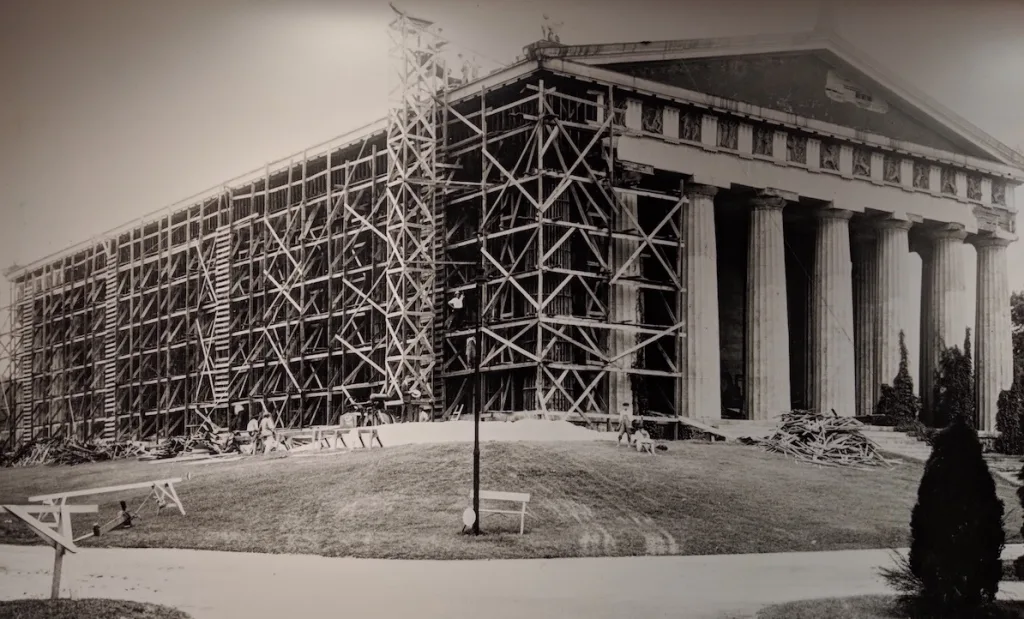
Sculptor George Julian Zolnay made the metope friezes, again working to ensure they were as similar to those originally sculpted by the great Phidias, who had overseen the construction of the whole Parthenon and all its sculptures back in the 5th century BC.
They even copied the unusually precise, rather astonishing design features of the Parthenon.
It has no straight lines: the base and architrave are all convex, arching upwards in the centre, and the columns all point slightly inwards.
A masterpiece of subtle visual manipulation.
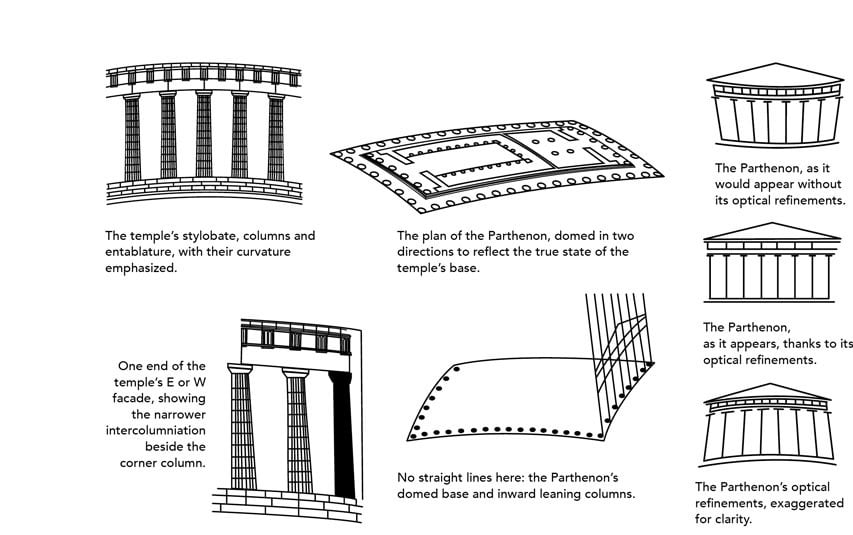
Here you can see the curve of the crepidoma (the set of three steps forming the base of the Parthenon).
It is subtle, but it has a huge impact on how the Parthenon appears to the human eye; this is why it *just looks right*.
Mathematics and architecture united.
Not to forget entasis — where a column is slightly thicker in the middle and tapers toward the top — and varying intercolumniation — the distances between the columns are smaller toward the corners.
The Nashville Parthenon carries across all of these original design features.
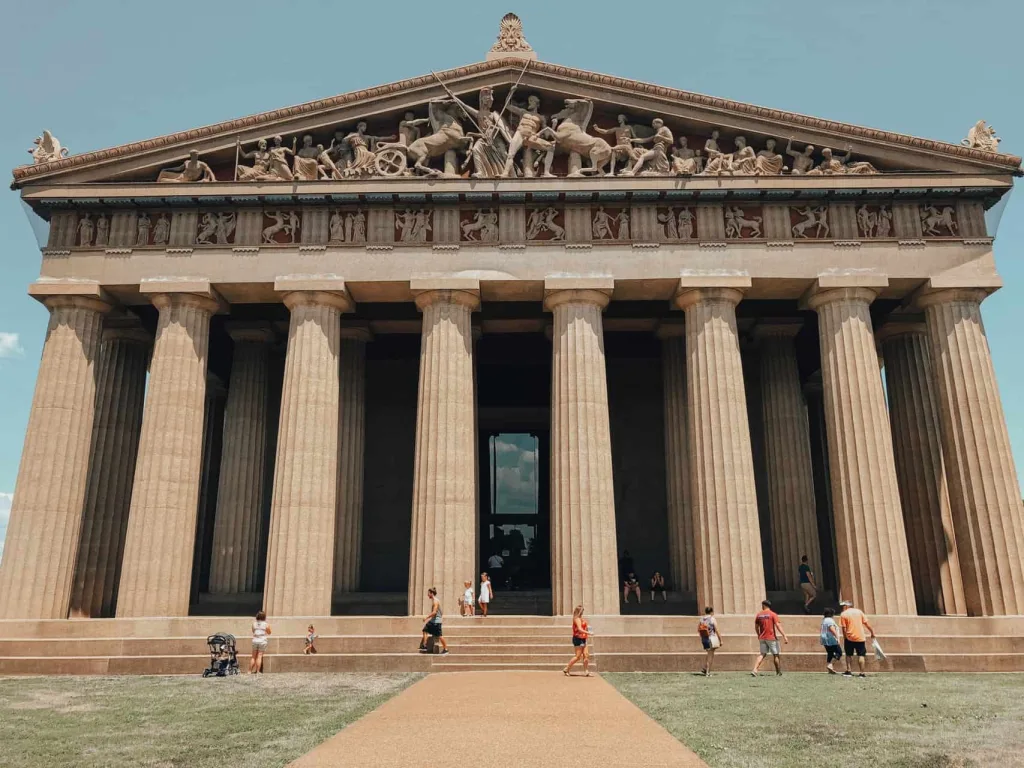
There was only one thing missing.
The original Parthenon had been home to a colossal statue of the goddess Athena, made by Phidias and now lost, but described in detail in contemporary accounts.
It was forty feet tall and made from chryselephantine — ivory and gold.
The people of Nashville had to wait, but by 1982 enough money had been raised and the sculptor Alan LeQuire was commissioned to recreate Phidias' masterpiece. In 1990 it was finished, albeit without the gold and built from cement and steel. A remarkable achievement.
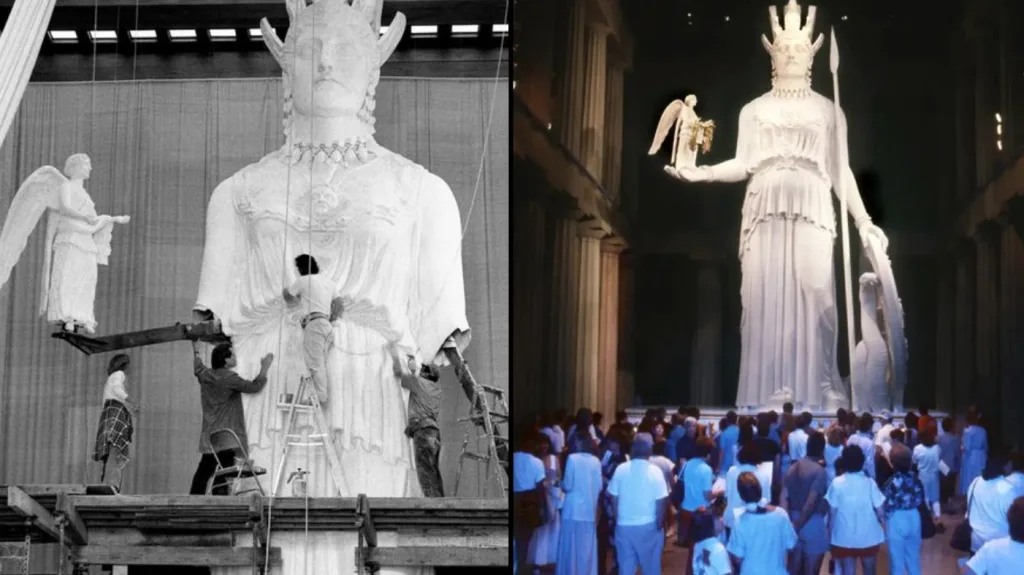
Another fundraising campaign was launched and twelve years later enough had been raised to gild and paint the statue of Athena Parthenos.
For the first time in nearly two thousand years Phidias' statue, the literal and metaphorical heart of Ancient Athens, could be seen again.

And so the Nashville Parthenon was complete, not so much unlike the real thing would have looked in Ancient Athens during its Golden Age, with Pericles as head of state and Socrates, then a young man, wandering its streets.
With one major exception.
The real Parthenon in Athens was built from Pentelic marble, but the Nashville version is made from reinforced concrete (for the structural elements) and cast concrete aggregate (for the decorative elements).
Modern materials; ancient design.
What would Phidias and Pericles have made of this version of their Parthenon on the far side of the world?
Well, it is a lasting tribute the importance of Ancient Greece and of Classical Athens in particular, and their contributions to American history and culture.
The story of the Nashville Parthenon is interesting in its own right, but it also suggests that architecture is less about specific materials/locations and more about the form and design of a building and the love and respect people have for it.
Concrete Classical Architecture?
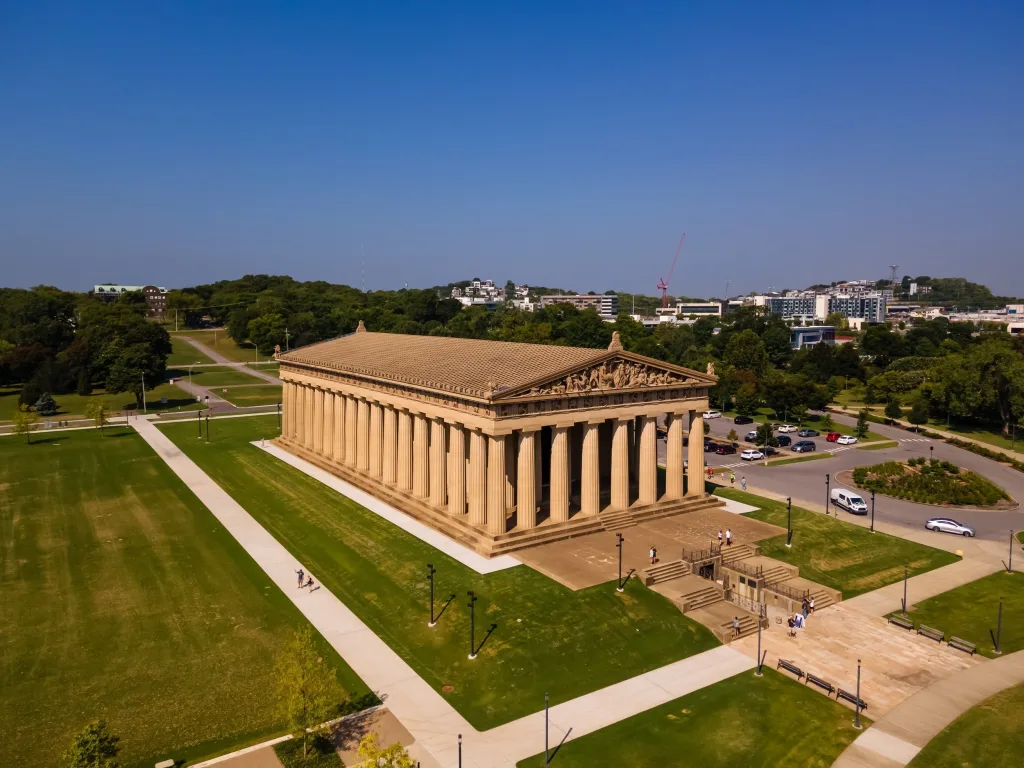
READ MORE: Archaeological Discovery: Paleologos Temple and Cemetery Unearthed at the Acropolis of Thessaloniki.

